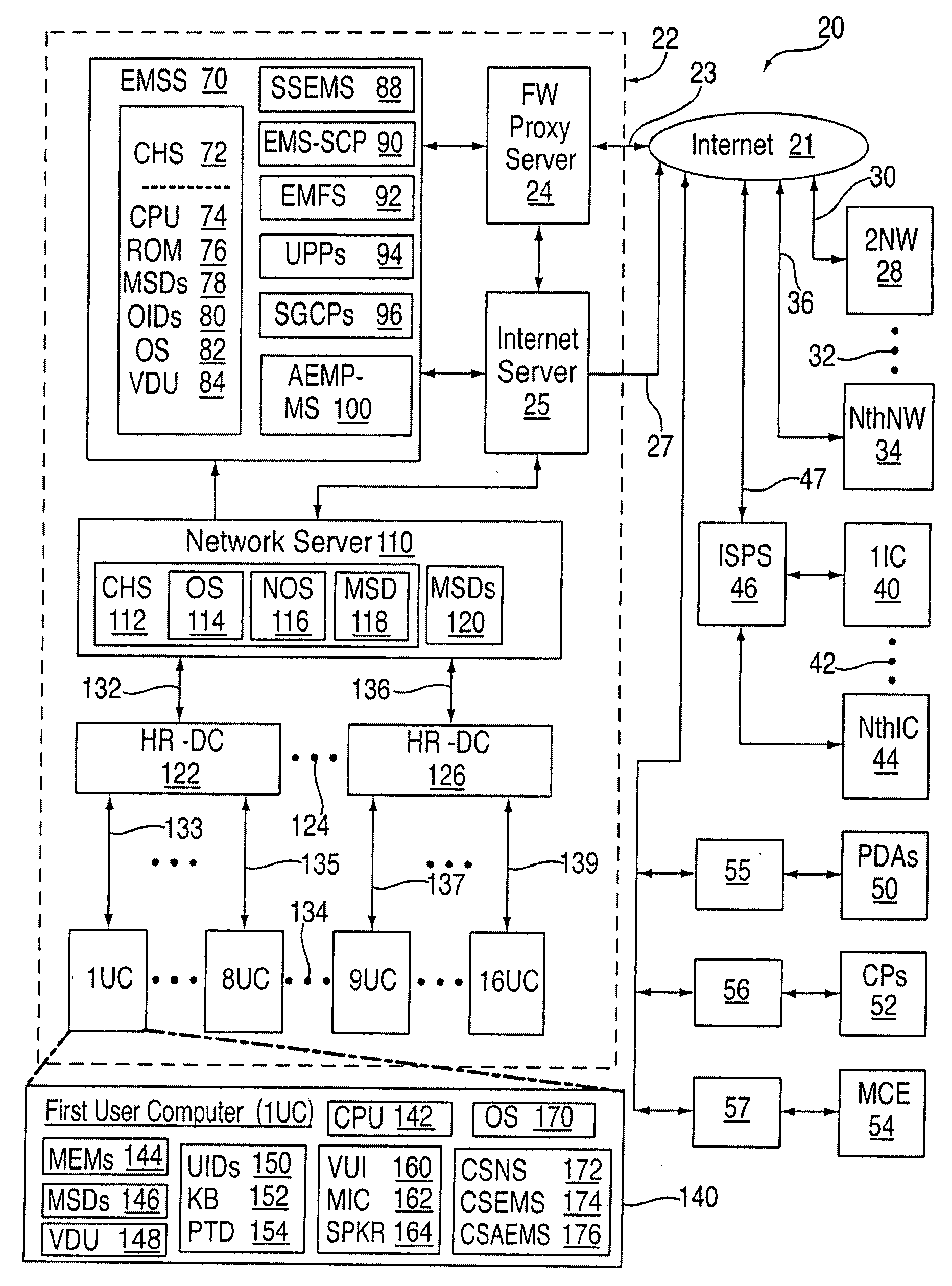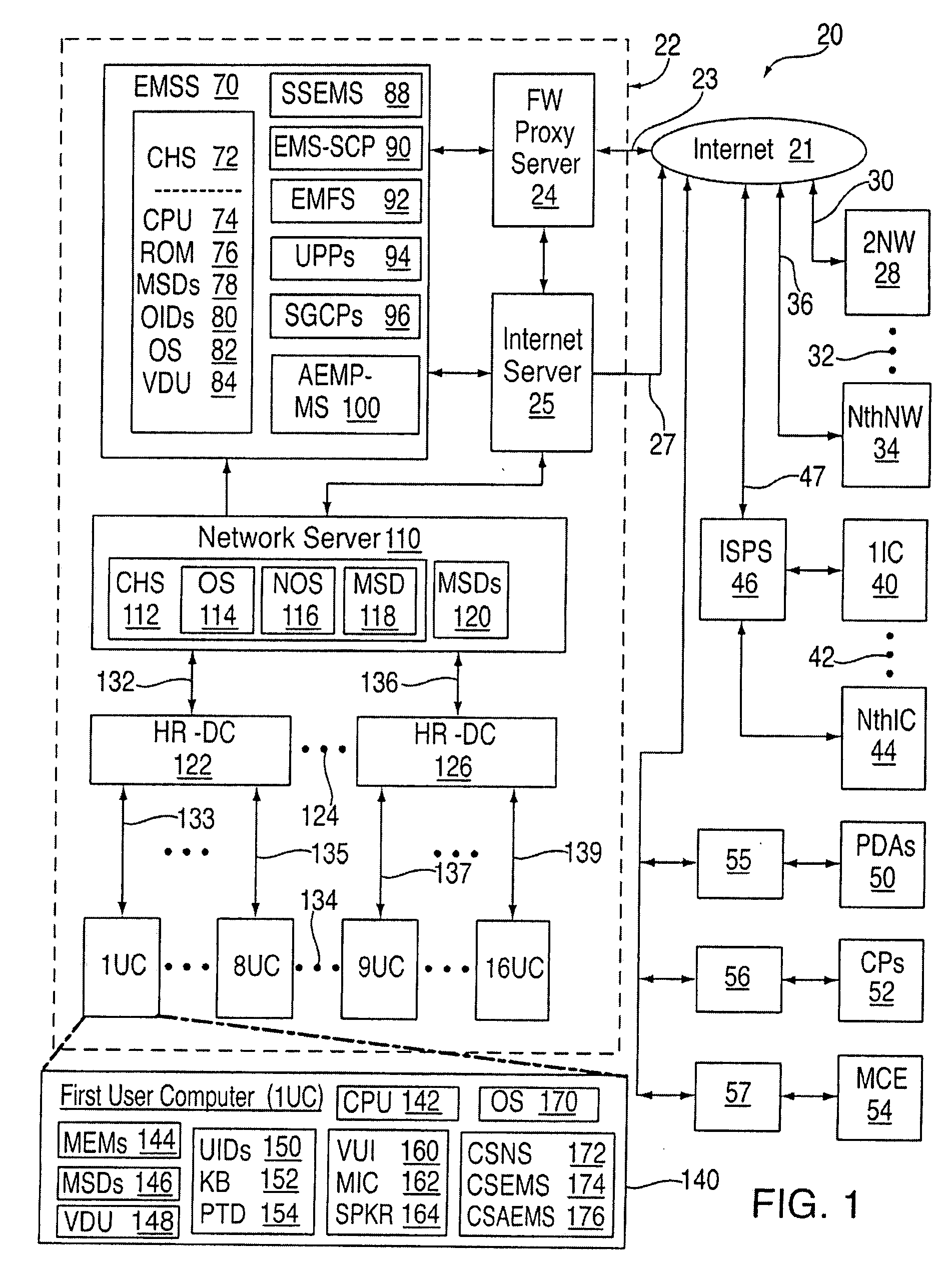Autonomic e-mail processing system and method
a technology email system, which is applied in the field of automatic e-mail processing system and method, can solve the problems of increasing the volume of e-mail with a concomitant increase in the amount of time, the inability of people to respond, and the inability of e-mail systems to achieve the effect of reducing the total amount of time spen
- Summary
- Abstract
- Description
- Claims
- Application Information
AI Technical Summary
Benefits of technology
Problems solved by technology
Method used
Image
Examples
Embodiment Construction
[0033] The present invention is illustrated and described herein in connection with certain embodiments, with the understanding that the present disclosure is to be considered as an exemplification of the principles of the invention and the associated functional specifications required for its implementation. However, it should be appreciated that the systems and methods of the present invention may be implemented in still different configurations, forms and variations, based on the teachings herein.
[0034] The systems and methods of the present invention typically operate in and as part of a computer network which has an e-mail server for receiving and sending electronic messages which are frequently just called e-mail. This server may be and often is part of an enterprise computing environment. The network may receive e-mail messages that originate from the Internet or an intranet. The term “intranet” as used herein refers to the infrastructure of the Internet or resembling the In...
PUM
 Login to View More
Login to View More Abstract
Description
Claims
Application Information
 Login to View More
Login to View More - R&D
- Intellectual Property
- Life Sciences
- Materials
- Tech Scout
- Unparalleled Data Quality
- Higher Quality Content
- 60% Fewer Hallucinations
Browse by: Latest US Patents, China's latest patents, Technical Efficacy Thesaurus, Application Domain, Technology Topic, Popular Technical Reports.
© 2025 PatSnap. All rights reserved.Legal|Privacy policy|Modern Slavery Act Transparency Statement|Sitemap|About US| Contact US: help@patsnap.com



